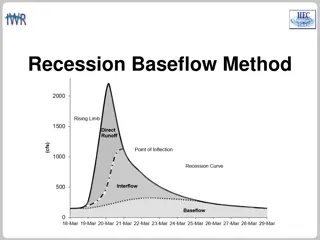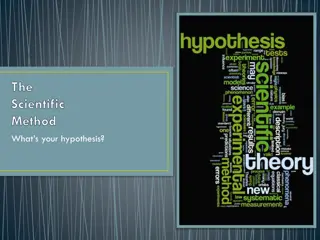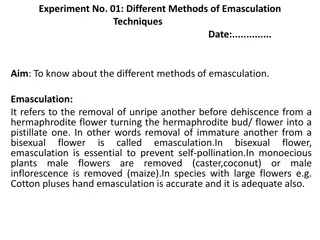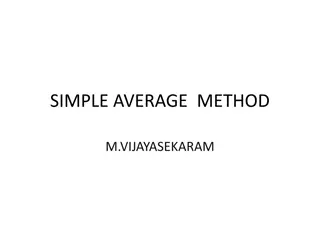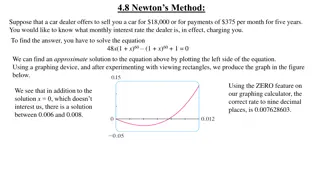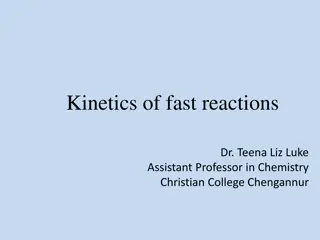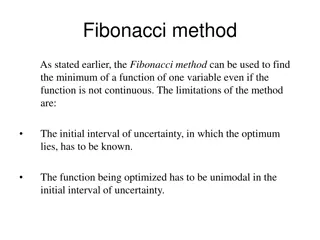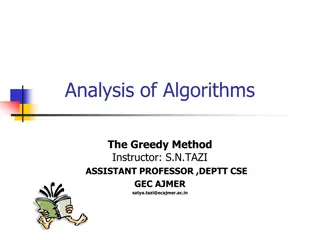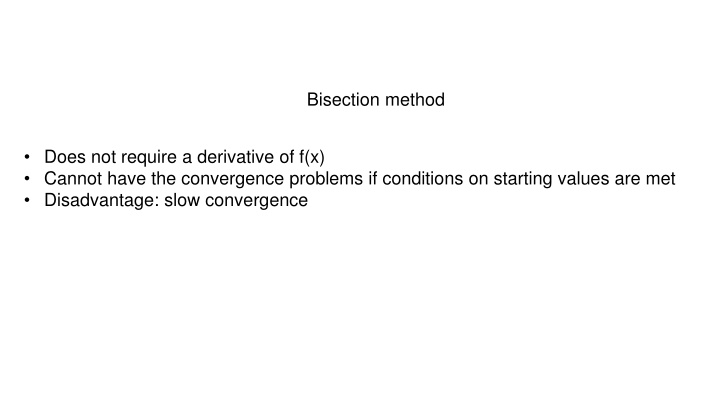
Bisection Method for Finding Roots
Explore the Bisection method, a numerical technique for finding zeros of a function without needing its derivative. Learn how to choose starting values, the basic idea behind the method, and the pseudocode involved. Discover how to ensure convergence and accuracy in root estimation.
Download Presentation

Please find below an Image/Link to download the presentation.
The content on the website is provided AS IS for your information and personal use only. It may not be sold, licensed, or shared on other websites without obtaining consent from the author. If you encounter any issues during the download, it is possible that the publisher has removed the file from their server.
You are allowed to download the files provided on this website for personal or commercial use, subject to the condition that they are used lawfully. All files are the property of their respective owners.
The content on the website is provided AS IS for your information and personal use only. It may not be sold, licensed, or shared on other websites without obtaining consent from the author.
E N D
Presentation Transcript
Bisection method Does not require a derivative of f(x) Cannot have the convergence problems if conditions on starting values are met Disadvantage: slow convergence
Bisection method for continuous functions If f(x) is continuous, this implies at least one zero between a and b c=(a+b)/2 Exactly one of the following will be true If f(c)=0 then c is a root. If f(c)f(a)<0 then a root is in [a,c]. If f(c)f(b)<0 then a root is in [c,b]. Which is true here? Bisection method requires starting values a and b with f(a)f(b)<0 What is wrong with the choice of a and b here?
Starting values for bisection method Let c = (a+b)/2 f(a)f(b)<0 as required but Only one root should be between starting values. Use graphical solution to choose good starting values.
Basic idea of bisection method In each cycle of iteration, a and b are end points and c = (a+b)/2 is the next estimate of the zero. If f(c) = 0 stop. c is the zero between a and b Decrease the interval around the zero by half by making c one of the ends of the new interval. If f(a)f(c) < 0, a is the other end: b <- c; otherwise, b is the other end: a <- c Converged? no: recycle yes: stop Put this idea into a pseudocode
Basic pseudocode for bisection method function [r,fr]=bisection(fh,xa,xb) Initialize steps, maxsteps, re and myrel (as in Newton) xc=(xa+xb)/2; while (myrel>re) && (steps<maxsteps) increment steps save current estimate of root (oldxc) reassign either xa or xb to xc calculate a new xc=(xa+xb)/2 myrel = absolute value of fractional change in xc end while loop r = best estimate of root fr = fh(r) end function What is missing from this basic bisection code? What is the requirement on xa and xb? This pseudocode assumes it is met.
Basic pseudocode for bisection method function [r,fr]=bisection(fh,xa,xb) Initialize steps, maxsteps, re and myrel (as in Newton) xc=(xa+xb)/2; while (myrel>re) && (steps<maxsteps) increment steps save current estimate of root (oldxc) reassign either xa or xb to xc calculate a new xc=(xa+xb)/2 myrel = absolute value of fractional change in xc end while loop r = best estimate of root fr = fh(r) end function To add a check for a sign change of function between initial xa and xb, and allow for f(xc)=0, we need a way to leave the function prematurely. RETURN provides this option
Extended pseudocode for bisection method function [r,fr]=bisection(fh,xa,xb) If f(xa)f(xb)>0, write message and return Initialize steps, maxsteps, remin, and re xc=(xa+xb)/2; if f(xc)=0 return while (re>remin) && (steps<maxsteps) increment steps save current estimate of root (oldxc) reassign either xa or xb to xc, calculate a new xc (why don t we need to check for f(xc)=0 here?) re = absolute value of fractional change in xc end while loop r = best estimate of root fr = fh(r) end function Very unlikely that f(xc) is identically zero, unless starting values have are chosen to make that true
Implement logic of bisection method in MATLAB Relational operators in MatLab < less than <= less than or equal == equal -= not equal > greater than >= greater than or equal
Test of bisectionwithreturn f(x)=x5 + x3 +3 does not have a zero on [-1,1] Write a script to call bisectwithreturn for this function with xa=-1 and xb=1 What do you need in your script? Do you get warning message?
More testing of bisectwithreturn f(x)=x5 + x3 +3 has a zero between -1.5 and -1 What value does bisectwithreturn find for this zero?
Test of bisectwithreturn f(x)=x5 + x3 +3 has a zero between -1.5 and -1 Did bisectwithreturn return a value of -1.1053?
More testing of bisectwithreturn We know from factoring that f(x) = x3-x2-2x has a zero at x=2. Write a script to call bisectwithreturn with this function and initial values 1.5 and 2.5. What happens?
Write a script to find all the zeros of f(x) = ex - 3x2 by the bisection method. From graphical we found that -0.5, 1, and 3.75 are good approximations. For bisection method we need 2 values near each zero with a sign change in the function between them.
Possible starting values r xa -0.5 -1 1.0 0.5 3.75 3.5 xb 0 1.5 4
Write a script to find all the zeros of f(x) = ex - 3x2 by the bisection method. Your script for Newton s method is a good starting point. Since you don t need logre for this problem you can replace it with ~ in the call to bisectwithreturn, as in [r, fr, ~] = bisectwithreturn(myf,-1,0).
Expand your script that compares rates of convergence of Newtons method to include convergence of the bisection method to the zero of f(x) = ex - 3x2 near 1, when the starting values are 0.5 and 1.5. Display all 3 estimates of the root. Put all 3 convergence curves on the same axes
Script to compare convergence of Newton and bisection methods method.
Bisection method converges slower than Newton How does the initial guess affect convergence of the bisection method?
log(|r-cn|) < log(b0-a0)-(n+1)log(2) Initial guess affects the y-intercept of log(|r-cn|) but slope is always log(2)
Assignment 3 Estimate the real zero of x3+3x-1 graphically. Hand in a copy of your graph with estimate marked. Refine the graphical solution by the bisection method. Hand in a copy of command window that shows your script for using bisection method and results.


